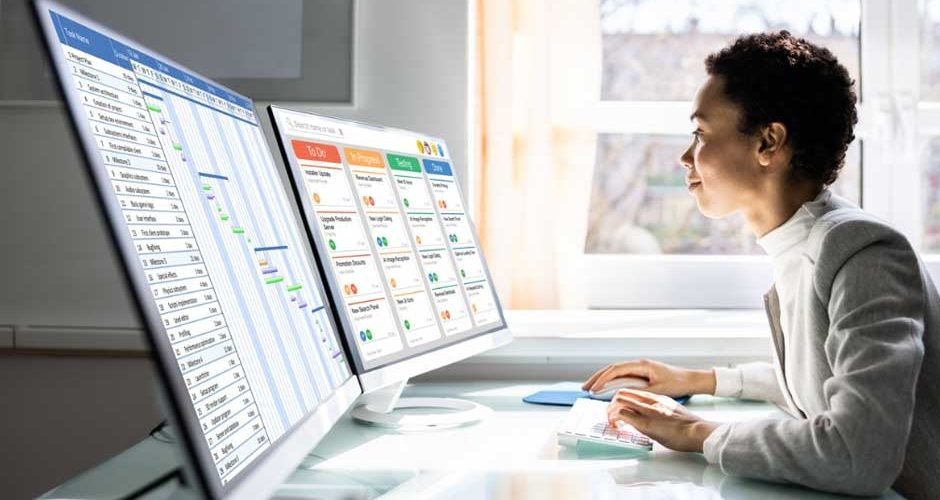In the architecture industry, managing projects efficiently and effectively is critical to success. With so many moving parts and stakeholders involved in each project, it can be challenging to keep everything organized and on track. That’s where project management software comes in – it provides a centralized platform to manage all aspects of a project, from scheduling and resource allocation to communication and document management.
Choosing the right project management software for your architectural firm can be a daunting task. There are countless options on the market, each with their own set of features and benefits. However, taking the time to assess your needs and carefully consider the options available can make all the difference in finding a solution that truly meets the unique requirements of your firm.
Table of Contents
Assess Your Needs
Before choosing a project management software, it’s essential to understand the types of projects your architectural firm typically manages. Different types of projects may require different software functionalities, so it’s essential to consider this aspect when making your decision. For example, if you specialize in large-scale commercial projects, you may need a project management software that includes complex scheduling and resource management features. On the other hand, if your firm focuses on smaller residential projects, you may need a software solution that prioritizes ease of use and collaboration features.
The size of your team can also impact your choice of project management software. If you have a small team, you may be able to get by with a simpler solution that is more affordable and easier to use. However, if you have a larger team, you may need a more robust solution that can accommodate multiple users and provide advanced collaboration and communication tools.
It’s crucial to take the time to analyze your current workflow and project management process to identify any pain points or areas where a project management software could provide added value. For example, if your team struggles with keeping track of project timelines or communicating effectively with clients and contractors, you’ll want to look for a software solution that prioritizes these features.
Budget is another critical factor to consider when choosing a project management software. While there are plenty of options available, some can be quite costly, so it’s essential to determine what you can afford and what features are most critical for your firm. Keep in mind that some software solutions may offer different pricing tiers, so you’ll want to explore these options to find the best fit for your budget. It’s also important to consider any ongoing costs, such as subscription fees or maintenance costs, when evaluating your options.
Types of Project Management Software
When evaluating project management software options, it’s important to understand the different types available. Three common types of project management software are traditional, agile, and cloud-based solutions. Each type offers unique features and benefits that can help your architectural firm streamline project management processes.
Another type of project management software is agile project management software. This type of software is designed for projects that require more flexibility and adaptability. Agile project management software allows for rapid iteration and continuous improvement, making it a popular choice for software development projects. This software is particularly useful for smaller, collaborative projects that require a high level of communication and teamwork.
One of the best project management software for architects is traditional project management software. This software type is a popular choice for construction and engineering industries, as it focuses on detailed planning and documentation. Traditional project management software allows users to create detailed project schedules, Gantt charts, and resource allocation plans. It’s a great option for larger projects that require precise planning and management.
Finally, cloud-based project management software is becoming increasingly popular among architectural firms. This type of software is hosted on the cloud, which means that it’s accessible from anywhere with an internet connection. Cloud-based project management software is great for remote teams or for firms that have multiple offices. It provides a centralized platform for project management, allowing team members to collaborate and communicate effectively.
Overall, the project management software for architects will depend on the specific needs and requirements of your firm. By evaluating the different types of software available and considering factors such as project type, team size, and budget, you can find a solution that meets your unique needs and helps improve project outcomes.
Considerations When Choosing the Right Project Management Software
When choosing project management software for your architectural firm, there are several important considerations to keep in mind beyond just the features and type of software. These include:
One of the critical factors to consider when choosing project management software is the user interface and ease of use. You want a software solution that is intuitive and easy to navigate, so your team members can quickly adopt it without significant training or support. Look for a software solution with a clean and organized user interface that allows you to easily access the features you need.
Even the most intuitive software can be challenging to navigate at first. Therefore, training and support options are crucial when selecting project management software. Choose a software solution that offers robust training and support materials such as video tutorials, documentation, and customer support. You may also want to consider software solutions that offer live training sessions or personalized support to help your team members get up to speed quickly. By leveraging suggestion box software within project management software, organizations can drive continuous improvement in their projects. Team members can provide suggestions for process enhancements, identify potential risks or bottlenecks, and propose innovative solutions to improve project outcomes.
It’s important to consider the scalability and flexibility of project management software when choosing a solution. Look for software that can grow with your business and accommodate changing needs over time. Scalability is particularly important if your team is growing or if you plan to take on larger projects in the future. Additionally, flexibility is crucial in case you need to customize or tailor the software to meet your unique requirements.
Finally, security and data privacy are critical considerations when selecting project management software. You want to ensure that your project data is secure and protected from unauthorized access or breaches. Look for software solutions that offer robust security features, such as multi-factor authentication and encryption. Additionally, consider the software vendor’s data privacy policies and compliance with industry standards, such as GDPR or HIPAA, if applicable to your work.
Overall
In conclusion, choosing the right project management software for your architectural firm is a critical decision that can have a significant impact on your team’s productivity and project outcomes. By following the steps outlined in this guide, including assessing your needs, evaluating different types of software, and considering important factors beyond just features, you can make an informed decision that meets your firm’s unique requirements.
When choosing project management software, it’s important to prioritize usability, scalability, and security, in addition to the features and functionality provided. Take the time to evaluate different software options, read reviews and customer feedback, and explore free trials or demos before making a final decision.





